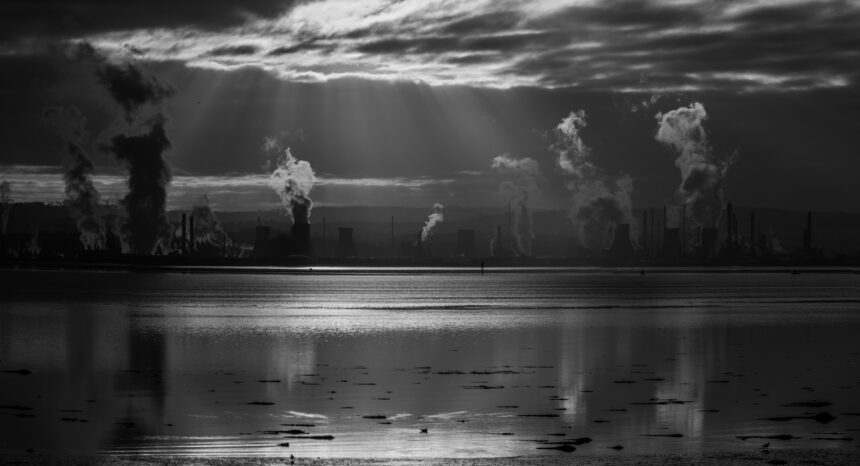Economic inequality across countries has been declining for decades. China’s economic boom has been a big reason, along with technology that has brought energy and clean water to poorer countries.
But a new paper in the Proceedings of the National Academies of Sciences finds that without global warming, the gap in gross domestic product per capita between the poorest and richest countries would have been even smaller — by 25% — from 1961 to 2010.
“It has been taken as given that countries and populations most vulnerable are not the countries and populations most responsible for emissions, and vice versa,” says Noah Diffenbaugh, one of the report authors and a senior fellow at Stanford University who studies climate systems. “Until this study, if someone was pressed to state exactly how much each country had been harmed relative to their contribution to global warming, those numbers were not available.”
In hotter countries, global warming can stunt GDP growth …
Global warming is hampering economic growth in poorer, naturally warmer countries, according to the authors. Pestilence, disease, flood and drought: just a few of the climate change consequences that disproportionately and negatively affect economies in poorer countries.
For large areas of the tropics and subtropics, the authors find a more than 99% chance of GDP declines associated with global warming over roughly the past half century.
Sudan, India, Nigeria, Indonesia and Brazil combined have more than 2 billion people — more than a quarter of the world’s population — and GDP would have been at least 25% higher in each of those countries from 1961 to 2010 if not for global warming, according to the authors. Out of those five countries, Sudan was most harmed, its GDP 36% lower with global warming.
… while colder countries can see GDP gains
Colder, often wealthier countries are more than 90% likely to experience GDP growth associated with global warming, the authors find. Norway, Canada, Sweden, Great Britain and France, with a combined population of 185 million, all have experienced GDP growth associated with global warming. Norway leads the group at 34% higher GDP and Canada is second at 32% higher GDP.
“There is some indication of a benefit of global warming in some of the wealthy countries,” Diffenbaugh says. “We have less scientific certainty in that result than the impact at the warm end of the temperature range.”
GDP growth in the world’s largest economies — the U.S., China and Japan — would have been only slightly higher from 1961 to 2010 without global warming, the authors find.
Emit less, grow less economically
This paper adds an economic angle to past research establishing that poorer countries are at the greatest risk for changes in climate. The authors find the 18 countries that emitted less than 10 tons of carbon dioxide per capita from 1961 to 2010 had a median 27% lower GDP with global warming. Of the 36 countries in the middle range for CO2 emissions — 10 to 100 tons per capita — 34 had negative economic impacts associated with global warming, with a median 24% lower GDP among those 34 countries.
Meanwhile, 14 of the 19 countries that emitted more than 300 tons of CO2 per capita benefitted from global warming, with a median 13% higher GDP from 1961 to 2010 for those 14 countries.
Research by Diffenbaugh’s co-author, Stanford professor Marshall Burke, may indicate why warmer countries have seen slower GDP growth due to global warming: Economic productivity for farming and other activities peaks at an annual average temperature of about 55 degrees Fahrenheit.
“This has implications for quantifying the costs and benefits of climate change, and implications for some of the issues that have been raised over the years in the UN [United Nations] treaty negotiations,” Diffenbaugh says. “A loss and damage mechanism has been discussed over the years, and this is relevant to how countries would quantify their losses.”
Data notes
The authors use temperature data from the Coupled Model Intercomparison Project, also called CMIP5, out of the Lawrence Livermore National Laboratory in California. CMIP5 is a widely used dataset in climate change research. It’s the same dataset researchers used for the U.S. Global Change Research Program’s Fourth National Climate Assessment, part of a series of reports USGCRP regularly provides Congress and the president on how climate change is affecting the earth.
For GDP data, the authors used two datasets: the primary dataset covers 1961 to 2010 and is the one the authors draw their conclusions from. They also looked at a second dataset from 1991 to 2010.
The primary dataset includes fewer countries but covers more years. Effects of GDP growth build up over time, so more years provides a clearer picture of economic impacts related to global warming. The second dataset has more countries but covers fewer years. The authors find similar patterns across the datasets, “but the cumulative magnitude is larger over the longer period,” they write.


Expert Commentary